Russia's first large tube meeting of the Scala community - as it was
Hello! I'm Julia, DevRel at Tinkoff.ru.
On September 28, Tinkoff together with the Scala-community of Russia held a large-scale, but very cozy meeting of developers, testers and all who are not indifferent to Scala. In the article I will share my impressions of how everything went.
First, a few words about why we are actively involved in such events. We just love Scala, use this language and really want the community to develop and replenish with interesting people.
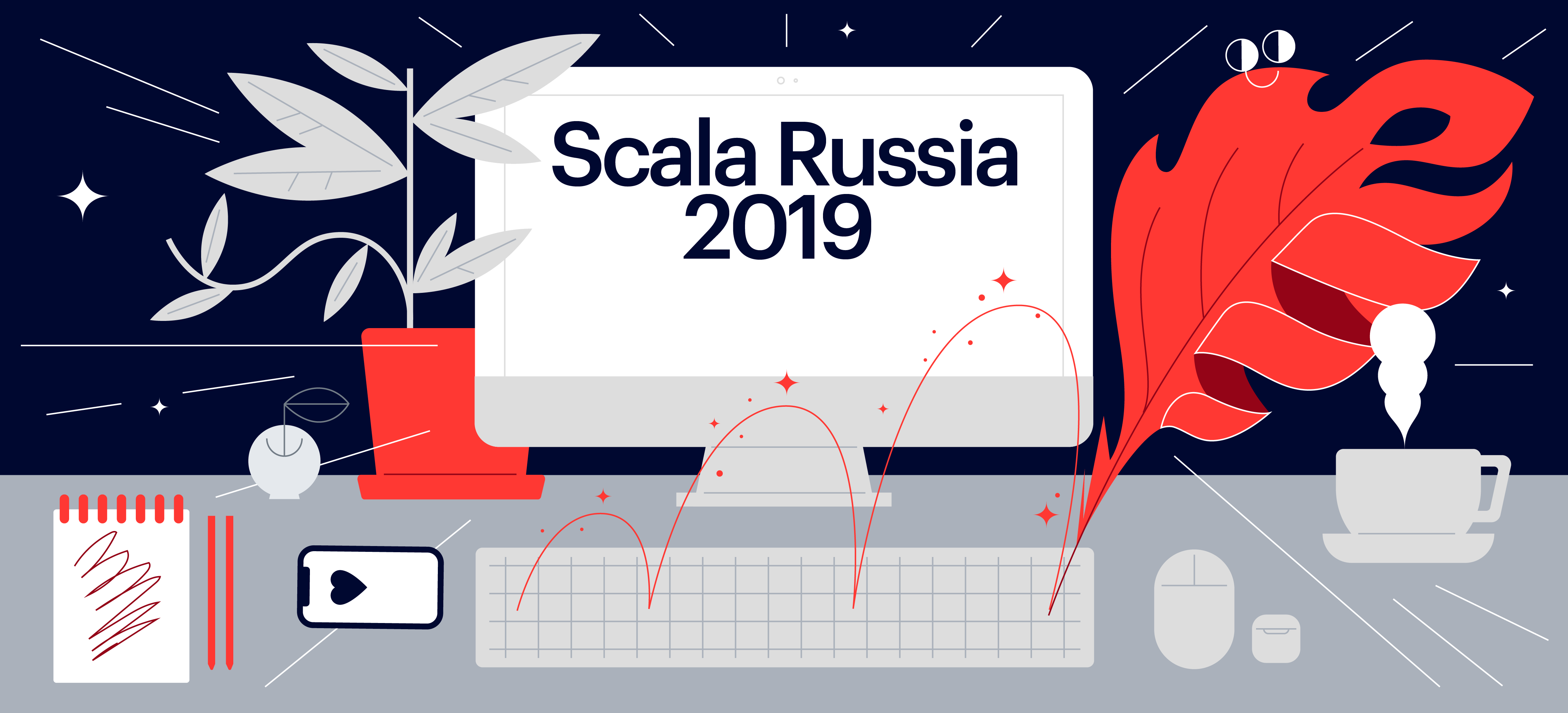
We moved away from the standard conference format and put together a lamp meeting for like-minded people. We found the most comfortable loft in the heart of Moscow - Deworkacy in the "Red October" - and invited a truly stellar line-up of speakers.
It is important for us that the conference is like meeting old friends, but at the same time be at a high level in the content of reports and workshops. As a result, about 400 participants gathered to listen to the speakers, participate in heated discussions and hang out at after parties.
Questions to speakers and interest in the topics raised showed that we hit the mark and were able to guess the desires of the scala community.
A small video proof that conveys mood: bit.ly/2IHtd02
Links to video reports, photo report and description of reports under the cut. Let's go!
The most anticipated guest of the program is John De Goose. John opened the event with an inspiring ZIO talk. He started with the history of computers, talked a little about Moore's law. Then he introduced the ZIO library, which was compared with future objects.

Based on John’s report, we can say that the result of using ZIO is faster, more optimized, more transparent ... In general, it is better than when using future objects in a similar task.
The expected question from the audience: is ZIO better than cats.io or monix task? We will not spoil it; better see the report itself :)
Video report on the link .
Vladimir Popov from Dins spoke about typed sagas. Saga means a long transaction, which can be represented by a sequence of subtransactions. In his report, Vladimir explains the importance of the fact that all subtransactions in sequence must be completed successfully or offset. He does this on a very understandable and interesting example - the vacation planning process.
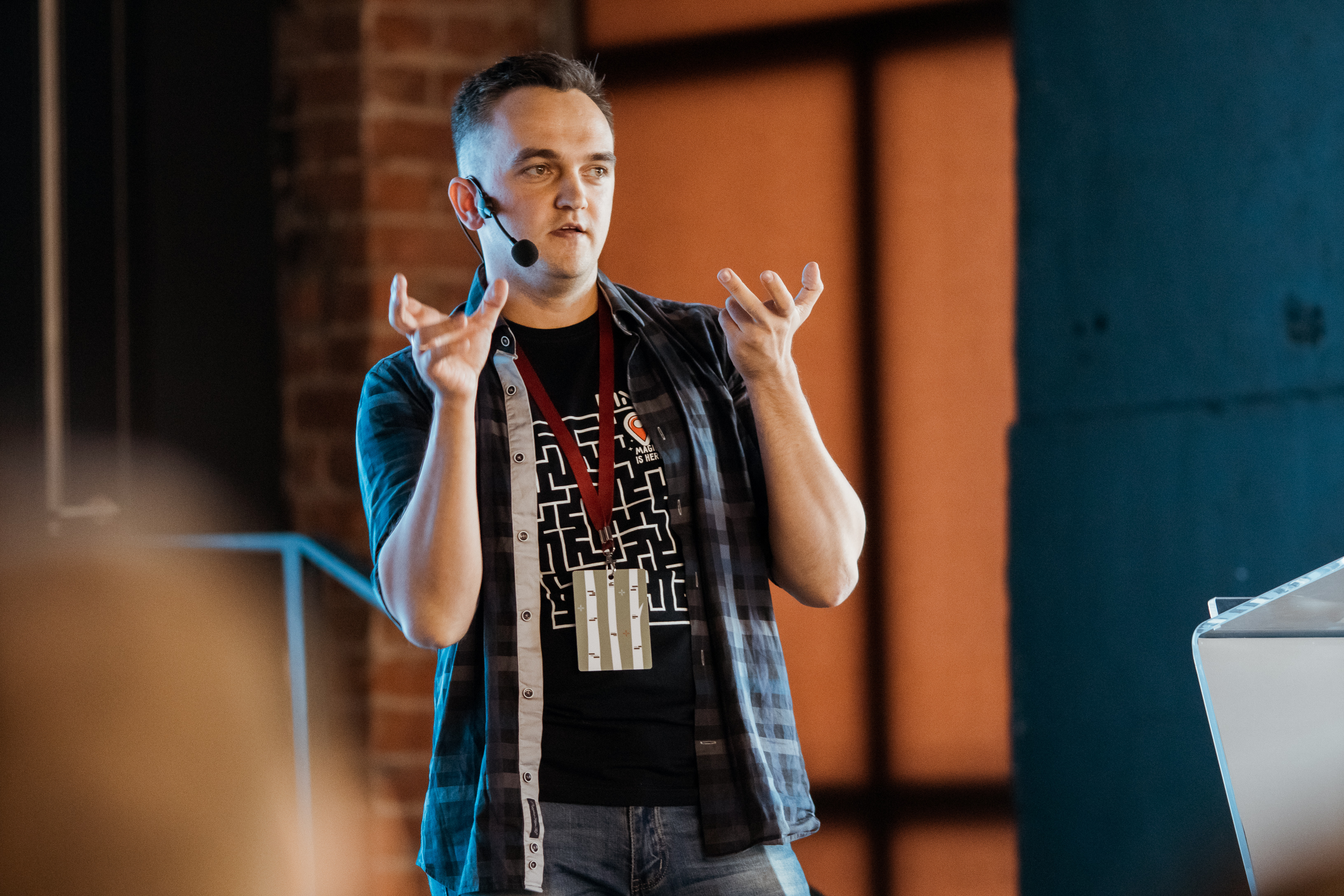
Vladimir shows how the complex type system in Scala helps to easily solve the difficult tasks of describing and executing sagas. As they say, it’s better to see once than to describe a hundred times.
We add only that already in the discussion, listeners with Vova found out that the sagas fit very rare cases. But this is rather not a universal, but a non-trivial solution.
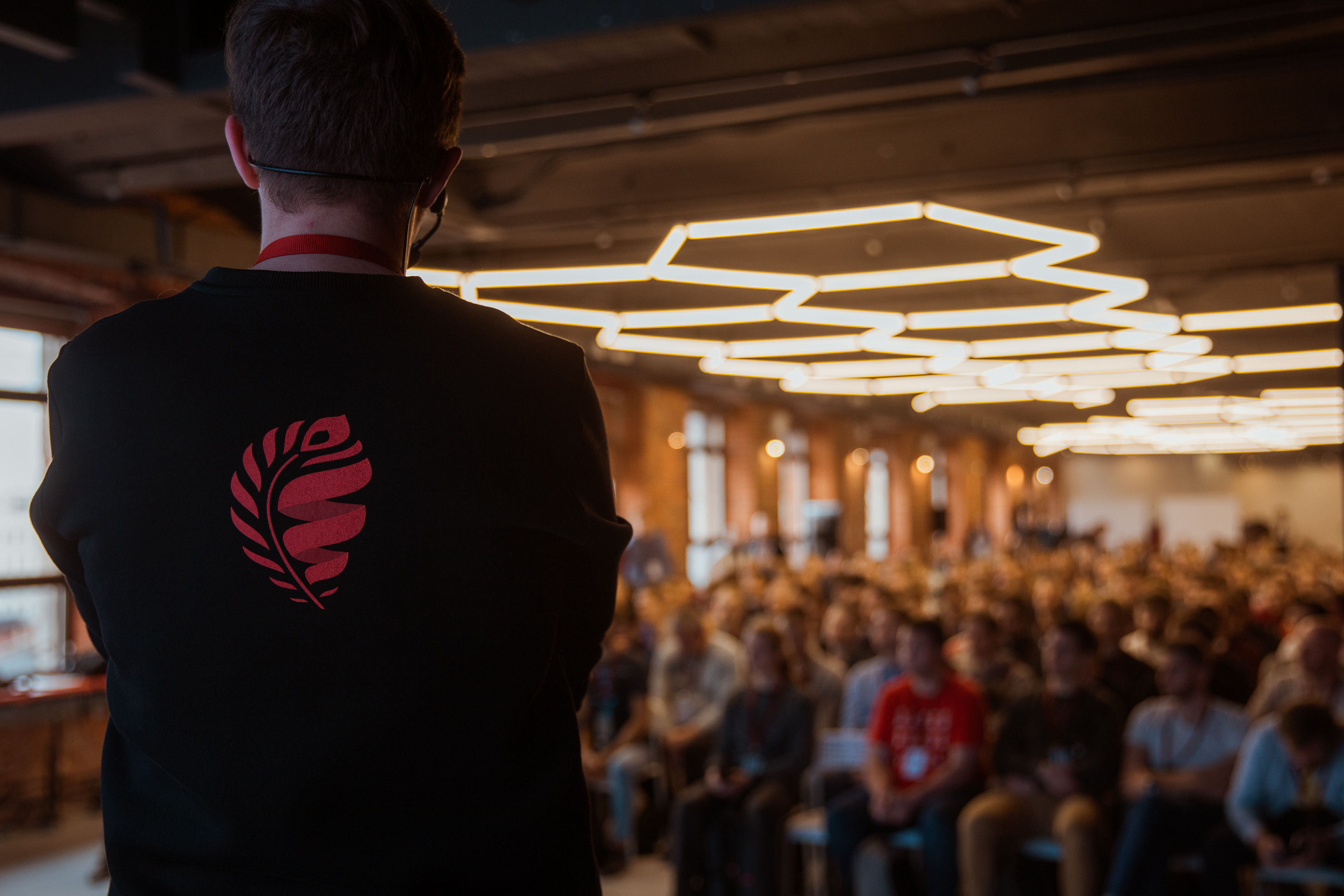
Report video by link
I cannot but tell about the report of Marina Morozova about the emotional and not letting go of the listener for a second.

The main thesis of the report was: “They say that Scala was conceived as the best version of Java. But where did these implications come from, and why does it hurt so much from them? ”
Marina talks in detail and interestingly about implications, about dotty’s intentions regarding them, jokes a bit, shares a little about what each developer’s heart hurts.
Video report on the link .
Evgeny Ostapenko from Datahub spoke about seamless access to data in distributed systems. The report may be useful to those who work with distributed systems, saw microservices, and to everyone who writes on Scala.
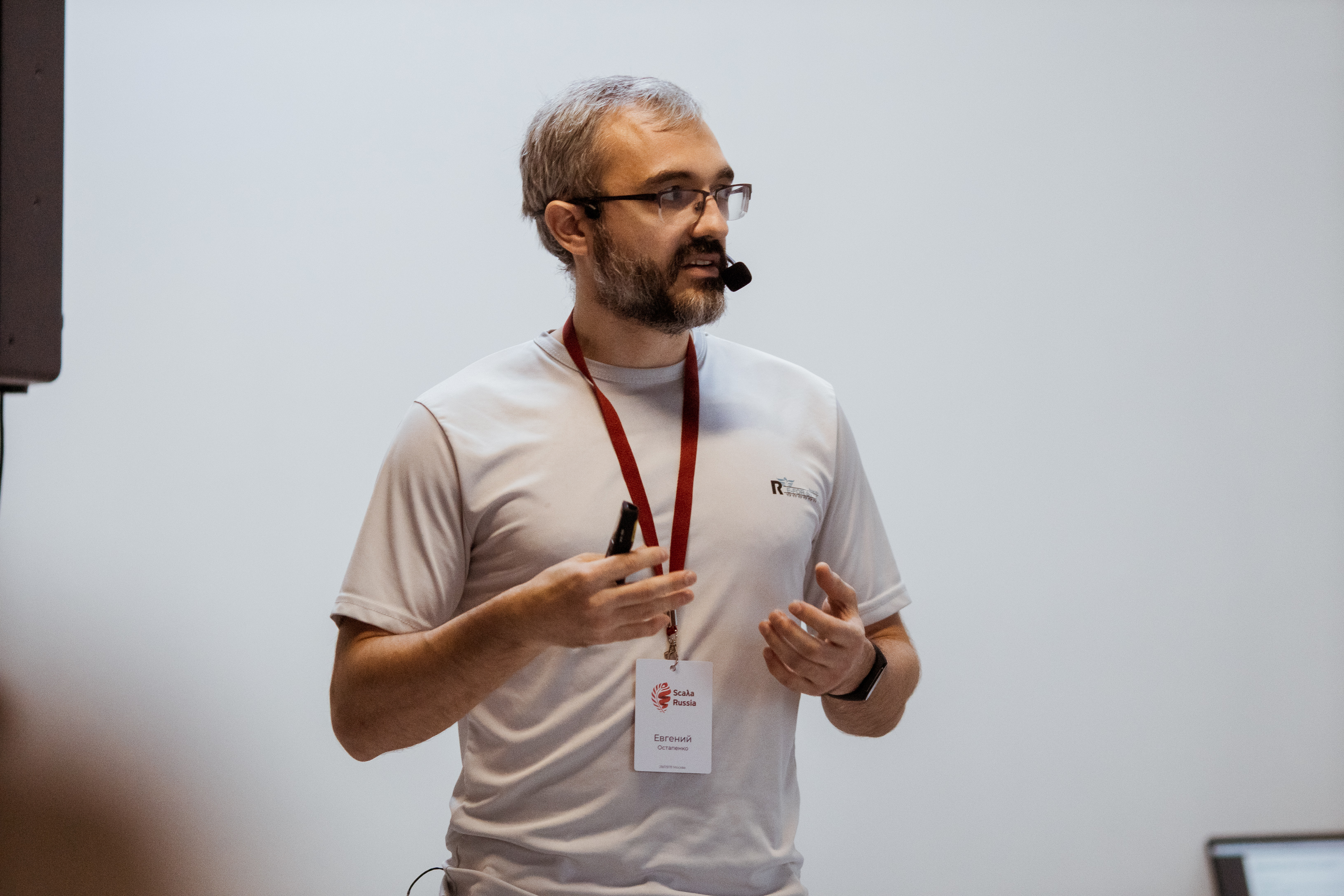
Eugene described the implementation of an access system using several microservices as a common user base. Eugene also talked about what were the expectations for the characteristics of this system, and described in detail each of them.
Report video by link
Vitaly Gonta from Andersen raised a burning topic about the automatic generation of instances of class classes. His report is about the magnolia library and what pain it solves in comparison with the well-known shapeless.
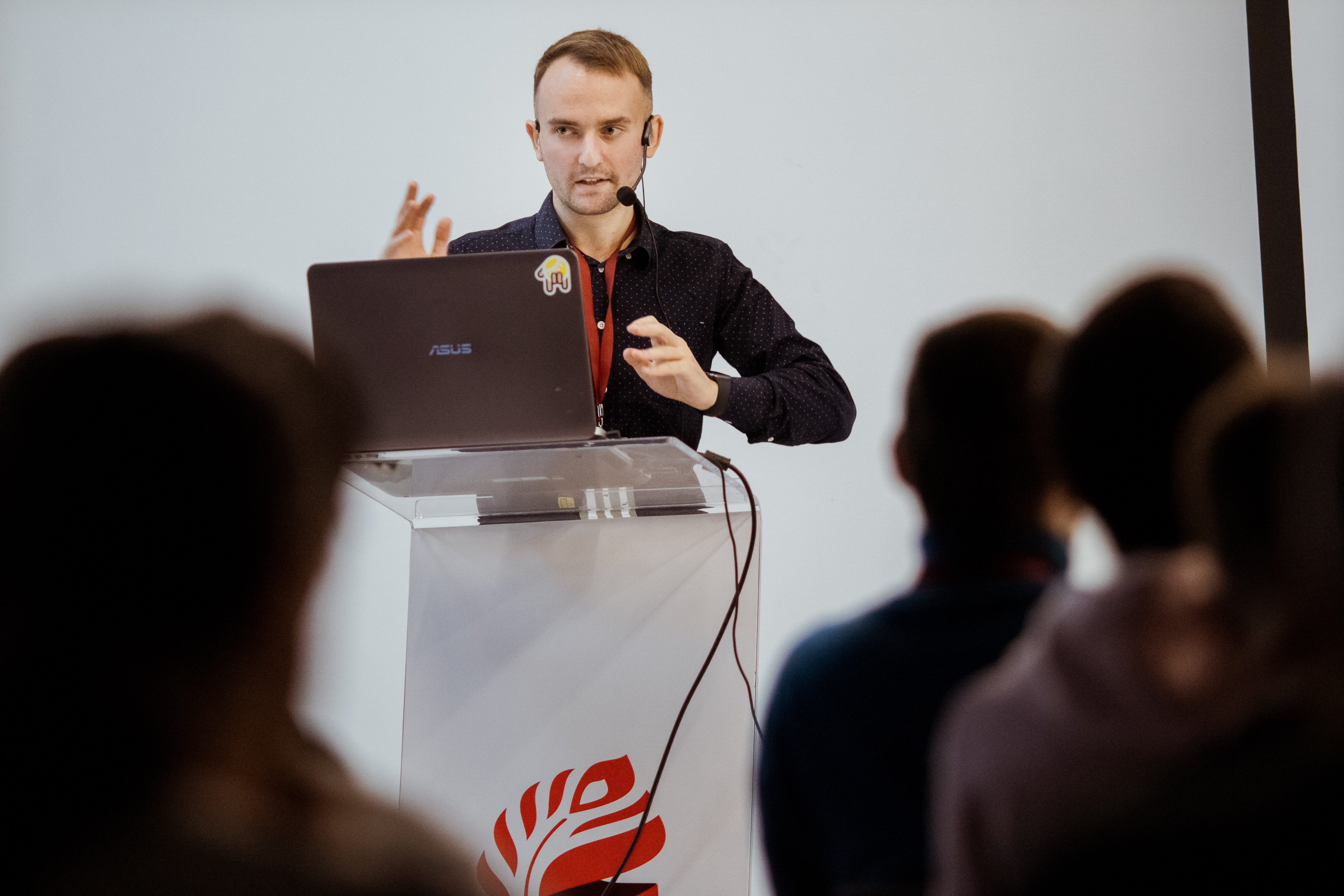
Report video by link
Michael Mutsianko from JetBrains raised the topic of nuances in the assembly of complex artifacts, in particular the scala plugin for IJ. To solve this problem, the SBT plugin was written not in vain - it allows you to get rid of the imperative build code.
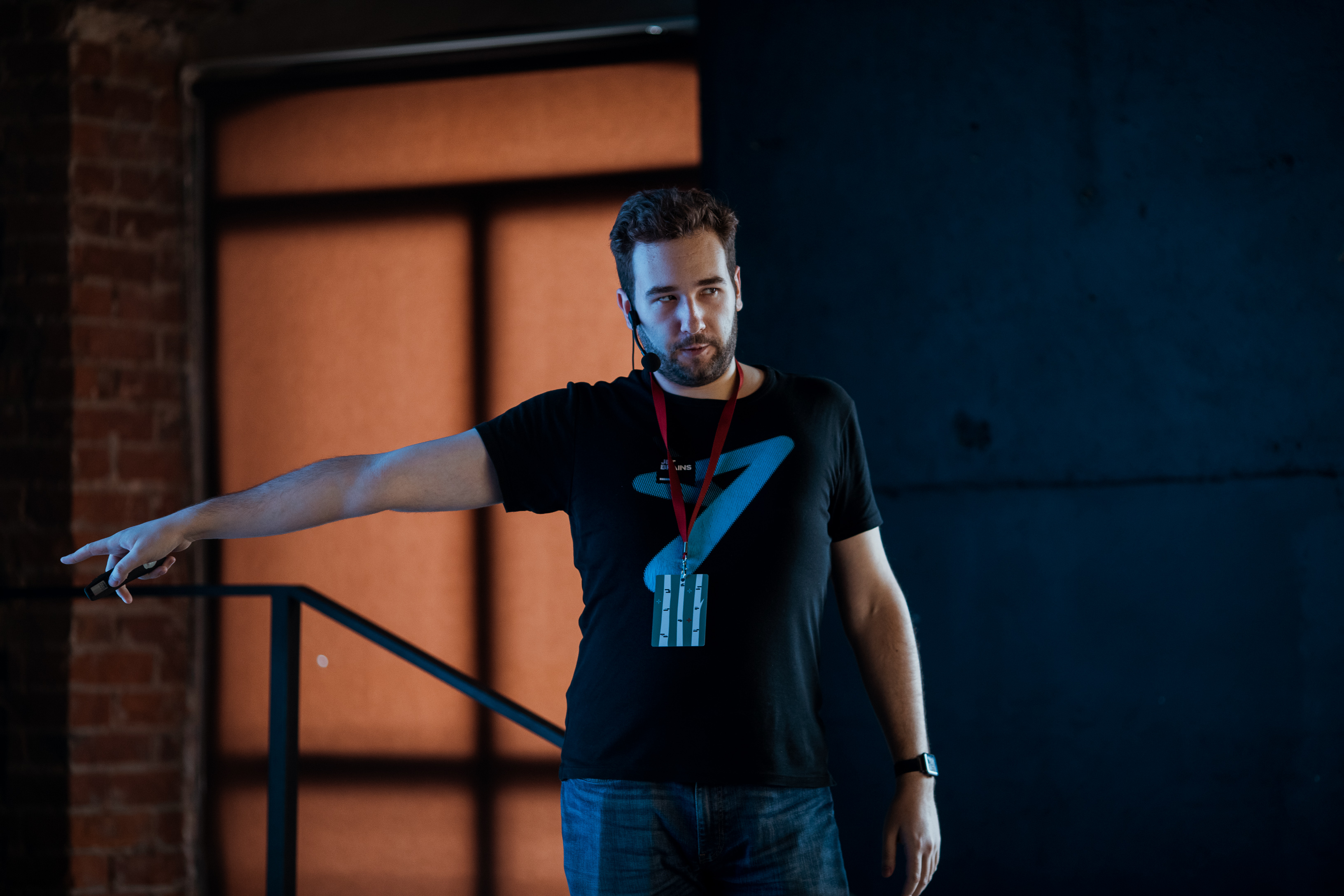
Report video by link
Alexander Valentinov from Tinkoff.ru had a talk about XML.
He wrote a new library that makes XML scala case classes and vice versa. Sasha told how she works; compared performance with scalaxb (this is the main library for XML in Scala now).
It turned out that it works several times faster and consumes 2.5 times less memory!
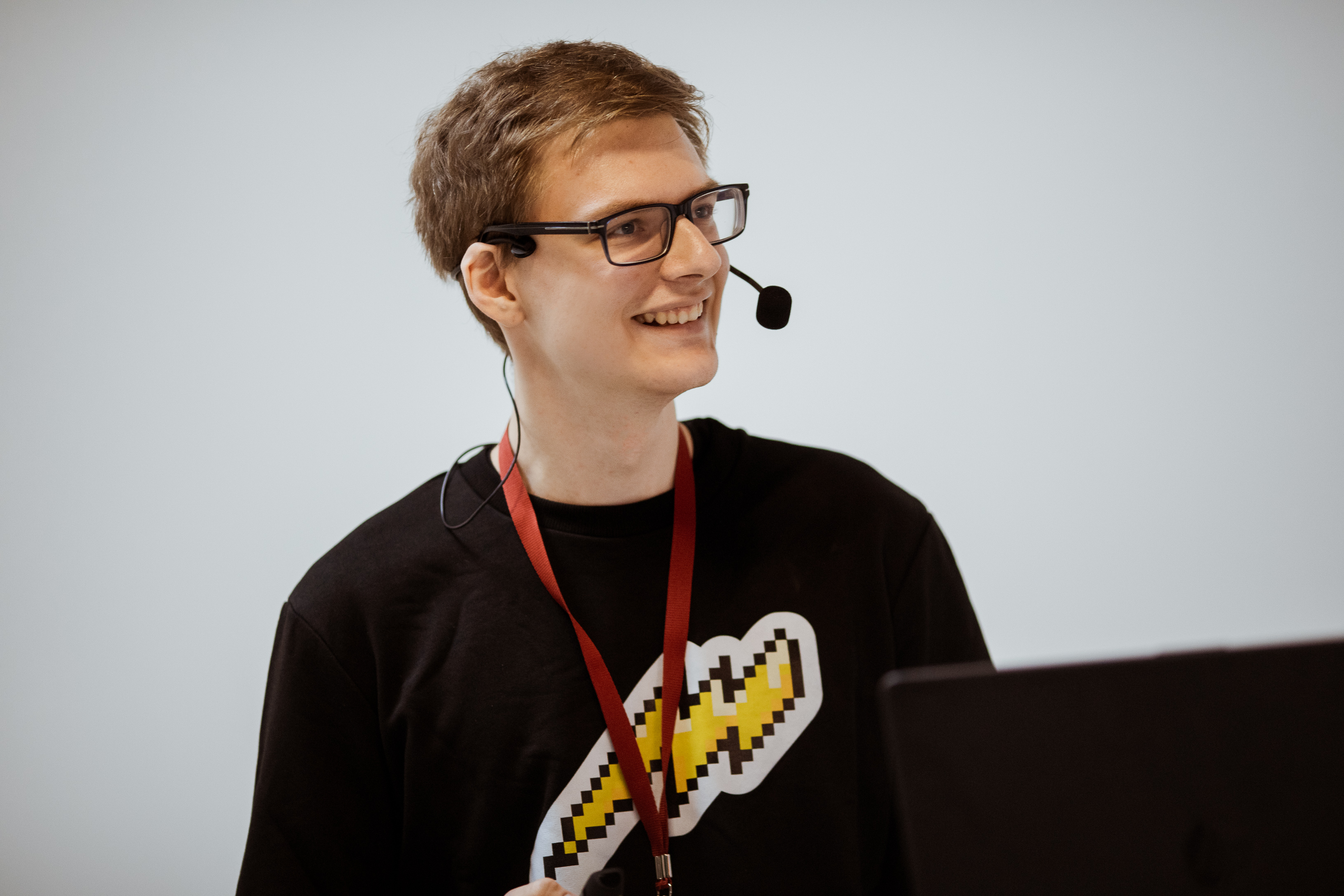
Video report on the link .
Many listeners, many interesting questions and discussions were on the report of Nikita Melnikov.

Nikita told how to defeat one of Scala's diseases - a long build time. The bonus touched on the topic of mono-repositories, the pros and cons of this approach.
Video report on the link .
Statebox Alexander Gryzlov in his report spoke about evidence engineering, modal logics and their history. He showed how to implement several modal logics as type systems for the simplest functional language. The report will be curious to developers interested in formal verification and the construction of functional languages.
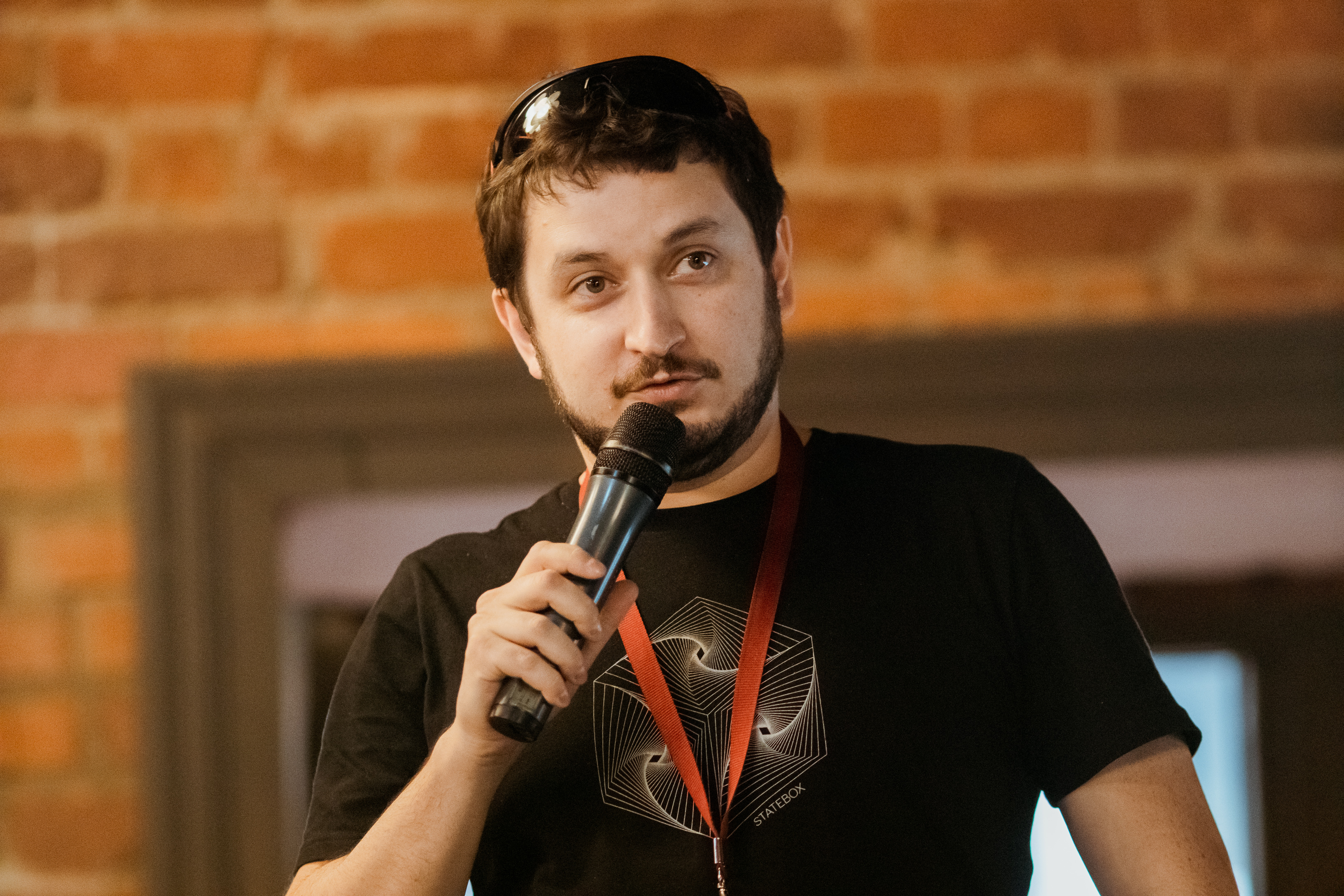
Alexander Miltsev in a report shared his experience with Dotty.
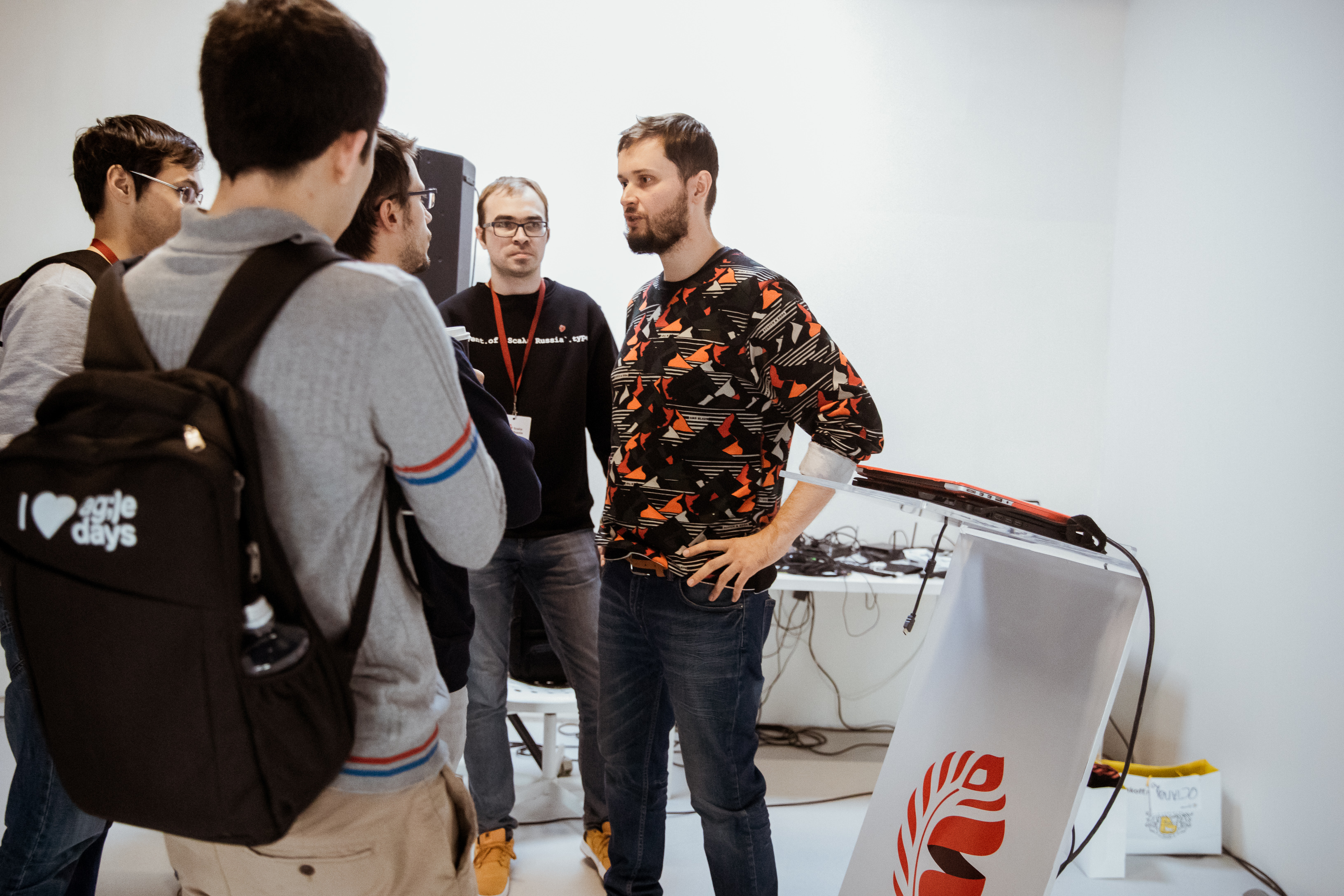
He spoke about the work on his library on Dotty with open source for the analysis of investment instruments, described the work with this library. Sasha also showed the nuances of working with Dotty and demonstrated a finished prototype.
Report video by link
In parallel with the reports, workshops were held.
Workshop of John De Goose and Alexey Fomkin.
At John’s workshop I couldn’t squeeze through. And I’ll tell you about Leshin.
Alex introduced the Korolev framework, which allows you to render web pages and even full-fledged web applications, using only the power of the server side. It looks like a scala application, in which, in addition to the server side, there is a part responsible for generating a page on the server using unusual domain syntax and only 6-kilobyte Javascript on the user side.
In the course of working with Korolev, the participants voiced several ideas and assumptions, and all of them were implemented live.

About Korolev there was a separate report from Vasily Morkovkin in which he described the experience of using the framework to implement the administrative panel on a large project in Tinkoff.ru.
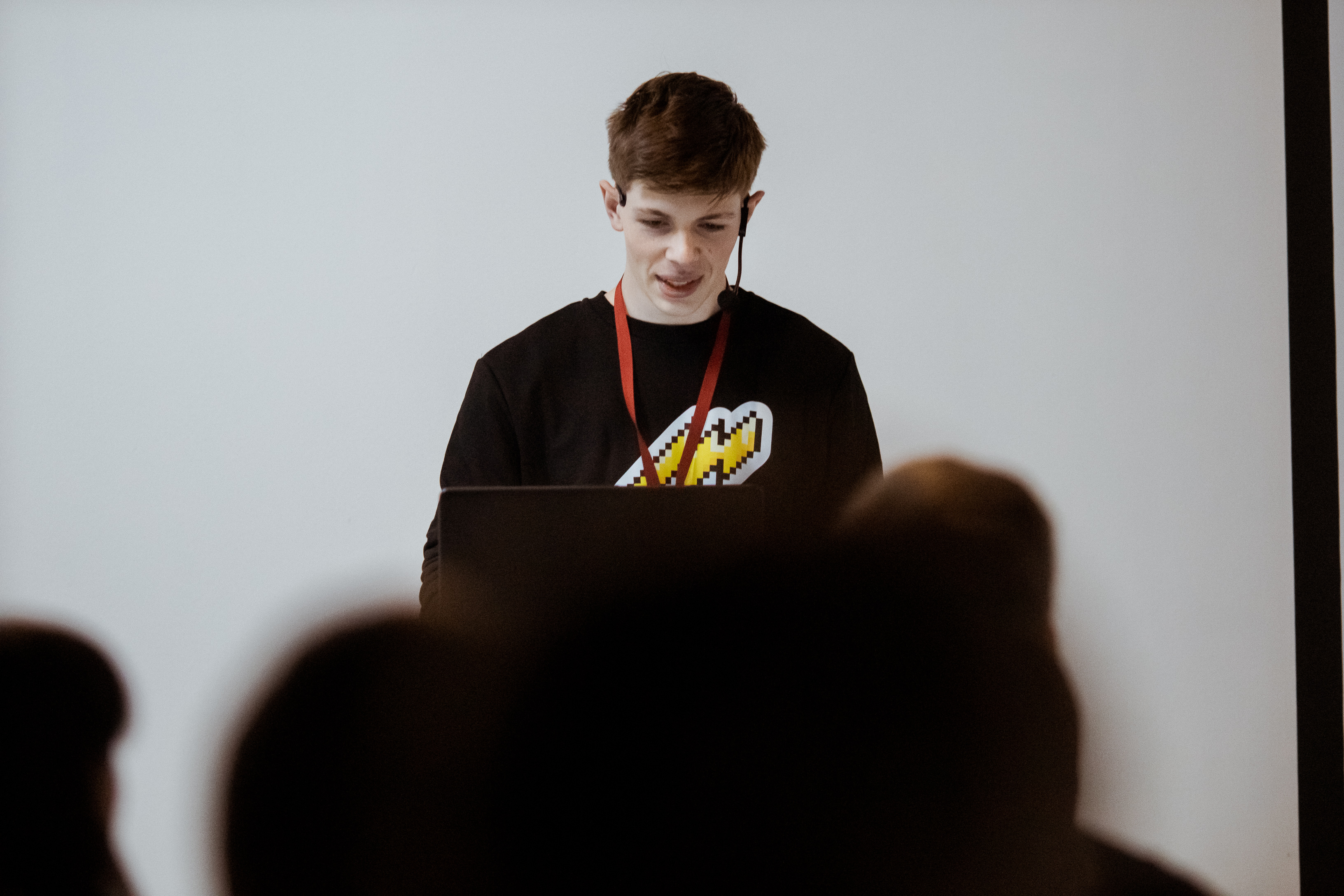
Video report on the link .
Below are the photos that we posted in our groups in VK and FB. The photos turned out beautiful - I think the participants will be pleased to find themselves :)
Although I am not writing code in Scala, I was convinced of the communication at the conference: reports and workshops came in. On a gloomy autumn morning, we filled the loft in the center of Moscow with happy smiles.
I am very proud that my team and I managed to become part of the community. We will try to make more such events :)
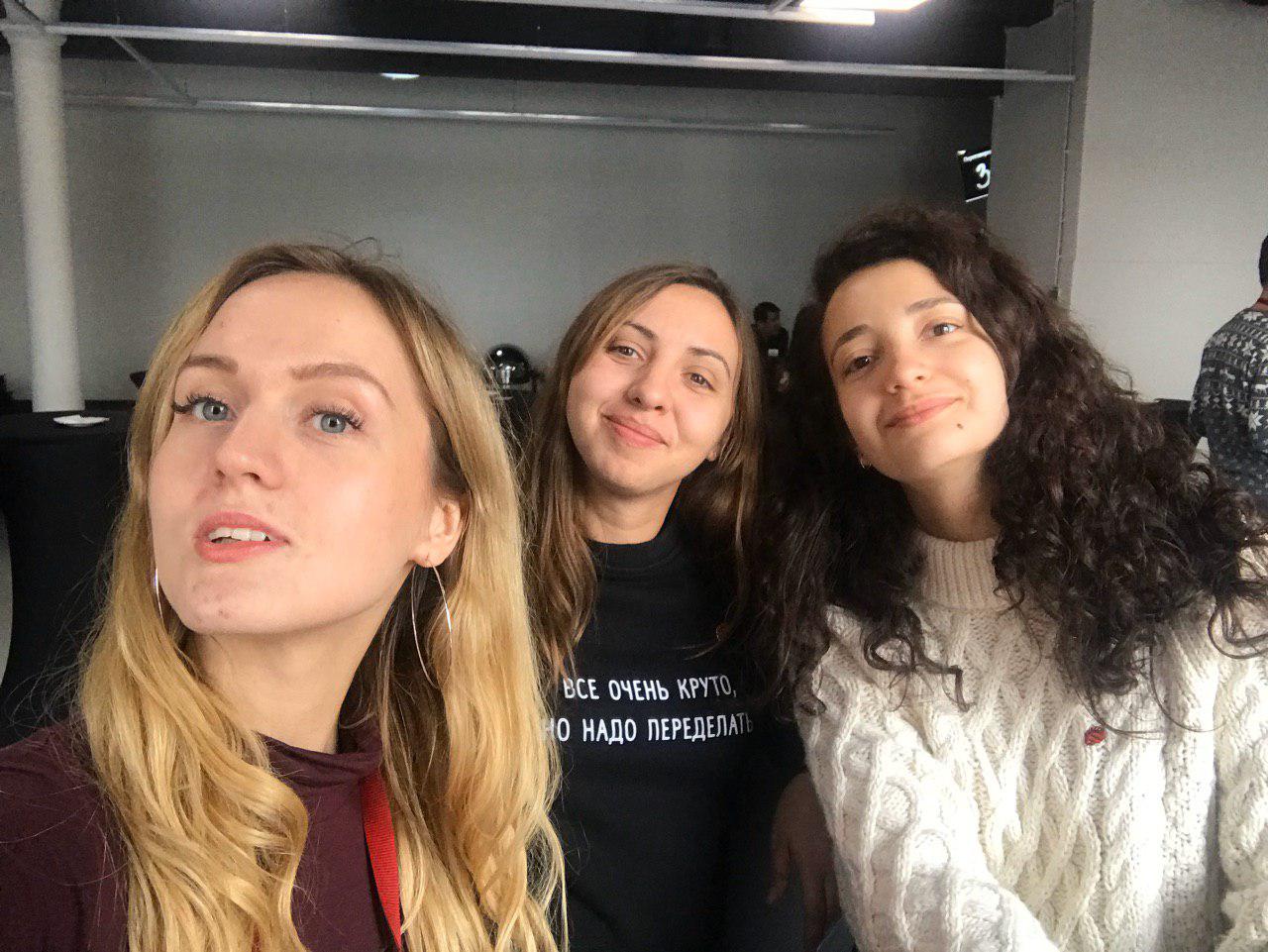
Julia
Links to the first , second and third part of the photo report in VK
And the first , second and third part of the photo report in the FB.
On September 28, Tinkoff together with the Scala-community of Russia held a large-scale, but very cozy meeting of developers, testers and all who are not indifferent to Scala. In the article I will share my impressions of how everything went.
First, a few words about why we are actively involved in such events. We just love Scala, use this language and really want the community to develop and replenish with interesting people.

We moved away from the standard conference format and put together a lamp meeting for like-minded people. We found the most comfortable loft in the heart of Moscow - Deworkacy in the "Red October" - and invited a truly stellar line-up of speakers.
It is important for us that the conference is like meeting old friends, but at the same time be at a high level in the content of reports and workshops. As a result, about 400 participants gathered to listen to the speakers, participate in heated discussions and hang out at after parties.
Questions to speakers and interest in the topics raised showed that we hit the mark and were able to guess the desires of the scala community.
A small video proof that conveys mood: bit.ly/2IHtd02
Links to video reports, photo report and description of reports under the cut. Let's go!
The most anticipated guest of the program is John De Goose. John opened the event with an inspiring ZIO talk. He started with the history of computers, talked a little about Moore's law. Then he introduced the ZIO library, which was compared with future objects.

Based on John’s report, we can say that the result of using ZIO is faster, more optimized, more transparent ... In general, it is better than when using future objects in a similar task.
The expected question from the audience: is ZIO better than cats.io or monix task? We will not spoil it; better see the report itself :)
Video report on the link .
Vladimir Popov from Dins spoke about typed sagas. Saga means a long transaction, which can be represented by a sequence of subtransactions. In his report, Vladimir explains the importance of the fact that all subtransactions in sequence must be completed successfully or offset. He does this on a very understandable and interesting example - the vacation planning process.

Vladimir shows how the complex type system in Scala helps to easily solve the difficult tasks of describing and executing sagas. As they say, it’s better to see once than to describe a hundred times.
We add only that already in the discussion, listeners with Vova found out that the sagas fit very rare cases. But this is rather not a universal, but a non-trivial solution.

Report video by link
I cannot but tell about the report of Marina Morozova about the emotional and not letting go of the listener for a second.

The main thesis of the report was: “They say that Scala was conceived as the best version of Java. But where did these implications come from, and why does it hurt so much from them? ”
Marina talks in detail and interestingly about implications, about dotty’s intentions regarding them, jokes a bit, shares a little about what each developer’s heart hurts.
Video report on the link .
Evgeny Ostapenko from Datahub spoke about seamless access to data in distributed systems. The report may be useful to those who work with distributed systems, saw microservices, and to everyone who writes on Scala.

Eugene described the implementation of an access system using several microservices as a common user base. Eugene also talked about what were the expectations for the characteristics of this system, and described in detail each of them.
Report video by link
Vitaly Gonta from Andersen raised a burning topic about the automatic generation of instances of class classes. His report is about the magnolia library and what pain it solves in comparison with the well-known shapeless.

Report video by link
Michael Mutsianko from JetBrains raised the topic of nuances in the assembly of complex artifacts, in particular the scala plugin for IJ. To solve this problem, the SBT plugin was written not in vain - it allows you to get rid of the imperative build code.

Report video by link
Alexander Valentinov from Tinkoff.ru had a talk about XML.
He wrote a new library that makes XML scala case classes and vice versa. Sasha told how she works; compared performance with scalaxb (this is the main library for XML in Scala now).
It turned out that it works several times faster and consumes 2.5 times less memory!

Video report on the link .
Many listeners, many interesting questions and discussions were on the report of Nikita Melnikov.

Nikita told how to defeat one of Scala's diseases - a long build time. The bonus touched on the topic of mono-repositories, the pros and cons of this approach.
Video report on the link .
Statebox Alexander Gryzlov in his report spoke about evidence engineering, modal logics and their history. He showed how to implement several modal logics as type systems for the simplest functional language. The report will be curious to developers interested in formal verification and the construction of functional languages.

Alexander Miltsev in a report shared his experience with Dotty.

He spoke about the work on his library on Dotty with open source for the analysis of investment instruments, described the work with this library. Sasha also showed the nuances of working with Dotty and demonstrated a finished prototype.
Report video by link
In parallel with the reports, workshops were held.
Workshop of John De Goose and Alexey Fomkin.
At John’s workshop I couldn’t squeeze through. And I’ll tell you about Leshin.
Alex introduced the Korolev framework, which allows you to render web pages and even full-fledged web applications, using only the power of the server side. It looks like a scala application, in which, in addition to the server side, there is a part responsible for generating a page on the server using unusual domain syntax and only 6-kilobyte Javascript on the user side.
In the course of working with Korolev, the participants voiced several ideas and assumptions, and all of them were implemented live.

About Korolev there was a separate report from Vasily Morkovkin in which he described the experience of using the framework to implement the administrative panel on a large project in Tinkoff.ru.

Video report on the link .
Below are the photos that we posted in our groups in VK and FB. The photos turned out beautiful - I think the participants will be pleased to find themselves :)
Although I am not writing code in Scala, I was convinced of the communication at the conference: reports and workshops came in. On a gloomy autumn morning, we filled the loft in the center of Moscow with happy smiles.
I am very proud that my team and I managed to become part of the community. We will try to make more such events :)

Julia
Links to the first , second and third part of the photo report in VK
And the first , second and third part of the photo report in the FB.
All Articles